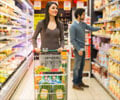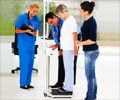In England, food delivery choices reflect social status, with preferences often tied to income, lifestyle, and cultural influences.

Social inequalities in the use of online food delivery services and associations with weight status: cross-sectional analysis of survey and consumer data
Go to source) Digital on-demand technology has rapidly and dramatically reshaped food distribution and delivery, making grocery and prepared take-away meals more accessible and convenient, and increasing the range of options available, note the researchers.
‘#Fooddelivery app users are at a higher risk of #obesity! No link found between online #grocery shopping and weight, but those using delivery apps were 84% more likely to be obese and 45% more likely to be #overweight. #healthyeating’





But previous research suggests that while buying groceries online is associated with healthier food choices, use of online take-away food delivery apps is rather less so. This prompted the researchers to explore the impact of the ongoing changes to food retail. In particular, they wanted to look at the extent to which the use of online food delivery services might be informed by indicators of social position—income and job role–and whether use of these services is associated with healthy or unhealthy weight.
They accessed data from a large consumer panel previously used in the Transport for London Study, which evaluated the impact of the removal of high fat, salt, and sugar foods advertising on the Transport for London network.
This entailed analysing food and drink purchase records and a survey of a representative sample of 1521 households in London and the north of England on the method of their daily food and drink purchases and their self-reported use of food delivery apps for prepared take-away meals in February 2019.
Social position was characterised as both household income and the social grade of the household main food shopper’s job role, and classified as: high; middle-high; middle-low; and low.
Advertisement
Data on weight (BMI) were available for 1245 (82%) households, and classified as combined underweight and healthy weight below 25; overweight 25-29.9; and obese 30 and above.
Advertisement
After accounting for potentially influential household factors, such as age and composition of the residents, households with the highest incomes were twice as likely to buy groceries online as those with the lowest income. But there was no association with social grade.
And while the use of food delivery apps wasn’t associated with income, it was associated with social grade after accounting for potentially influential factors such as age, sex, and educational attainment.
Those in the lowest social grade had more than double the odds of using these apps as those in the highest; those in the middle-low social grade had 69% greater odds of doing so.
Similar results were obtained after adjusting for social grade and household income.
This is an observational study, and as such, no firm conclusions about cause and effect can be drawn. And the researchers acknowledge that the survey responses reflect one point in time and rely on recall.
The analyses were also limited by the uneven distribution of households across social grade and income groups. And the sample of predominantly urban households in London and the north of England may not be fully representative of the country as a whole, they suggest.
But they say: “Our findings suggest that there are differences in use, both within and between the online grocery and online takeaway food sector.”
Although they didn’t scrutinise the content of the food and meals ordered online or by app, previously published research indicates that food delivery app use is associated with lower dietary quality and that online grocery shopping tends to be of higher dietary quality than in-store purchasing, point out the researchers.
“In the grocery sector, it has been hypothesised that a shift to online grocery shopping will occur more rapidly among affluent households, and it is possible that we observed evidence for this,” they write.
Digital food delivery apps may also make it easier to make unhealthy food choices, they say, adding: “The differential use of online food delivery services may exacerbate dietary inequalities and warrants further research.”
Reference:
- Social inequalities in the use of online food delivery services and associations with weight status: cross-sectional analysis of survey and consumer data - (https://bmjpublichealth.bmj.com/content/2/2/e000487)















